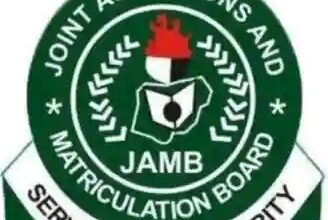Your Complete Guide to NELFUND Upkeep Allowance Eligibility, Delays and Backlog Payments 2025/2026
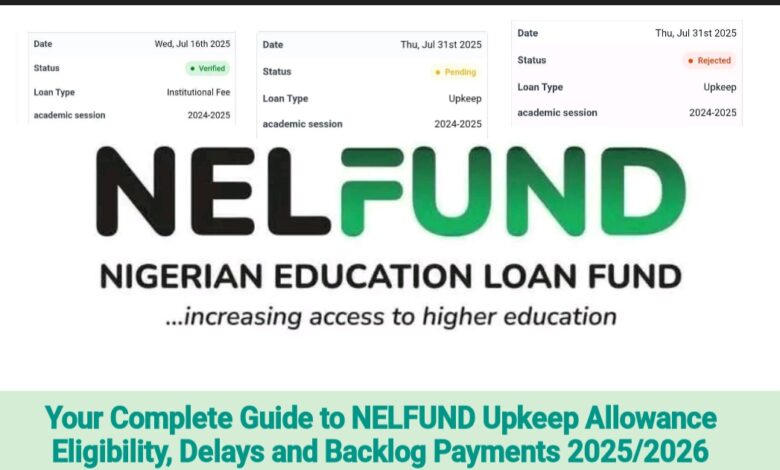
Every academic year, thousands of students look forward to different forms of educational support that can help them focus better on their studies.
One of the programs that has gained attention in Nigeria is the NELFUND upkeep allowance.
For the 2025/2026 academic session, many students are eager to understand exactly who can be eligible, how the process works, and what happens when there are delays or unpaid allowances from the previous year.
If you are new to this, NELFUND upkeep allowance is simply a form of support designed to assist eligible students in recognised institutions.
Over the years, it has helped many learners cover essential needs so they can stay committed to their education.
But like any structured program, there are rules, timelines, and verification steps that must be followed before benefits are received.
In the past 2024/2025 academic session, some students experienced delays in receiving their upkeep. This led to questions about whether the backlog would be paid together with the new session’s allowance or if a reapplication would be necessary.
Understanding the reasons behind such delays can make a big difference in preparing your documents, meeting verification deadlines, and avoiding common mistakes.
In this guide, we will look at the key eligibility requirements for the 2025/2026 upkeep allowance, what students should know about the application process, and how NELFUND handles pending payments from the previous academic session.
The aim is to make the information easy to understand, even if you are hearing about NELFUND for the first time.
By the end, you will have a clear picture of how to check if you qualify, what to do if you applied last year and have not received anything, and the steps you can take to keep your application active.
This way, you can stay informed and ready for the upcoming academic session without unnecessary stress.
Who can be a eligible for NELFUND upkeep allowance in 2025/2026 academic session?
Understanding eligibility for the NELFUND upkeep allowance is important for any student who wants to benefit from it in the 2025/2026 academic year. The process is not just about applying; it also depends on when you applied, the status of your previous application, and whether you meet the basic requirements set by NELFUND.
If you applied for NELFUND in 2024 and your application is still active, there is a high chance you will be considered for the 2025/2026 upkeep allowance. Many students who began their application in the previous academic session are often carried over into the next cycle, especially if their paperwork and verification are already in order.
Applying early in 2025 can also make a difference. Students who submit their applications at the start of the process usually have enough time to correct errors, complete verification steps, and respond to any requests from NELFUND. Starting early reduces the risk of missing important deadlines that could affect eligibility.
For those who applied as far back as 2023/2024 but have not yet received any response or allowance, NELFUND may still process these applications in 2025/2026. This often happens when there are backlogs or pending verifications from earlier cycles. While the waiting can be frustrating, it is still possible to be included in the next disbursement once your application is confirmed.
For my experience, staying updated is key. Checking your NELFUND portal regularly, following official updates, and making sure your details are correct can help you avoid unnecessary delays. Eligibility is not only about the year you applied but also about keeping your application active and complete.
By understanding these timelines and requirements, you can better prepare yourself for the upcoming academic year and increase your chances of being included in the 2025/2026 upkeep allowance list
Why haven’t I received my NELFUND upkeep payment from the 2024/2025 application?
If you applied for NELFUND in 2024 and are still waiting for your upkeep payment, it can be worrying. Many students feel unsure about what is happening or if their application is still valid. The truth is, there are a few things to check before assuming something went wrong.
First, if NELFUND has already paid your school fees, that is a good sign. It often means your application has passed the main checks and there are no major problems with your details. In most cases, the upkeep payment follows shortly after. It may just be a matter of waiting for your turn in the payment schedule.
Read more: 10 Common Reasons Why My NELFUND Application Was Rejected and How to Fix Them
However, if you have not received both your school fees payment and upkeep allowance, there are important things to review. One common issue is bank details. Make sure you entered your account number correctly and that the name matches exactly with your registration details.
Another important point is the type of bank account you use. Many students have noticed that using traditional banks like Access Bank, First Bank, or Zenith Bank tends to work more smoothly. Some digital banks may not be supported for certain payments, which can cause delays.
Also, check that you entered your admission number correctly when you applied. Even a small mistake can slow down the verification process. Your school’s ICT or café should help confirm that your admission number and national ID are properly verified in the NELFUND system.
From my own experience helping other students, patience is still important. If all your details are correct and verified, your payment might simply be part of a later batch — often called “Batch C.” In that case, it is more about timing than a problem with your application.
By reviewing these points and staying updated through the official channels, you can be more confident about when your upkeep payment will arrive.
Is NELFUND still processing unpaid applications from 2024/2025?
yes as we mentioned above the moment you read above and you make sure don’t have any issues don’t worry your upkeep will be paid and the paid will be start by June to July
Do I need to reapply in 2025/2026 if my 2024/2025 upkeep hasn’t been paid?
if you know you don’t have any issues we mentioned above don’t worry you don’t need to reapply nelfund, but if you now used digital bank like Opay palmpay monie point you will need to wait until nelfund give you chance to re-uploaded your bank account
Could an error in my bank details delay my NELFUND upkeep payment?
Yes, incorrect bank details can be one of the main reasons some students have not received their NELFUND upkeep payment — even if their school fees have already been paid by NELFUND. When your account number, bank name, or BVN details do not match your application records, the payment process may fail, causing a delay.
This situation is more common than many think. Sometimes, it’s just a small typing mistake when entering the account number, or choosing the wrong bank name from the list during application. Other times, the issue could be that the account name does not match exactly with the name you used for your NELFUND application.
Read more: NELFUND 2024/2025 Latest Updates on Student Loan Policy Changes
If you realise that you entered the wrong account details, do not panic. NELFUND usually gives applicants the chance to update their information during specific correction periods. These opportunities are often announced through the NELFUND portal or official communication channels. Once the correction window is open, you can re-upload your correct account number and bank details
What does it mean when my NELFUND upkeep status shows “pending” in 2025/2026?
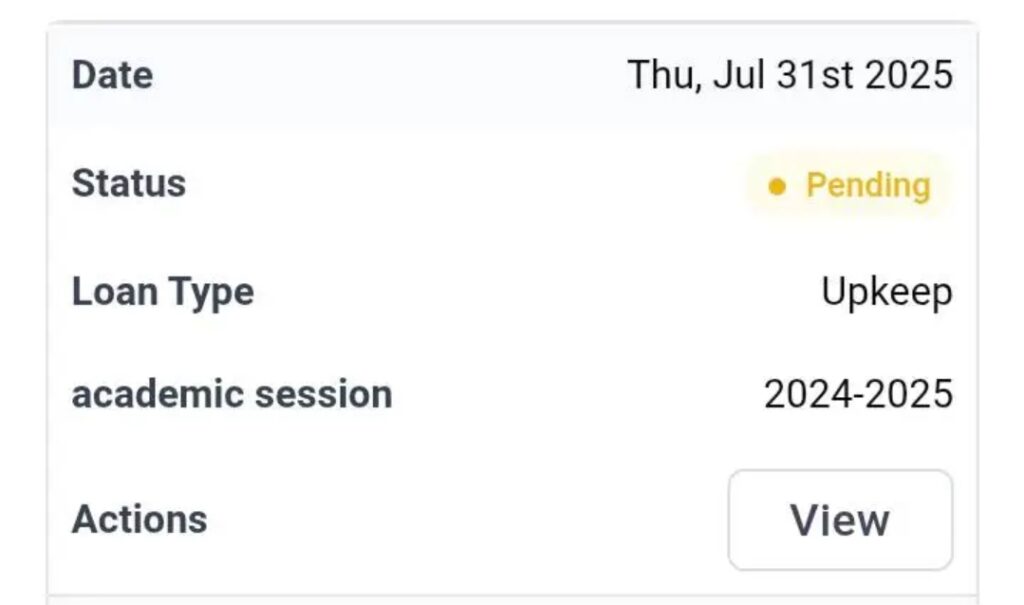
If you log in to your NELFUND dashboard after applying and see your upkeep status showing “pending”, it usually means your application is still going through the verification stage. This is the period when the NELFUND team checks your documents, details, and school information to make sure everything matches.
For most students, “pending” is not a bad sign. It simply means your application is still in progress. NELFUND needs to confirm things like your admission number, school records, identification details, and bank account information before moving you to the next stage.
If your documents are correct and up to date, the pending stage will usually change to “verified” when the checks are complete. However, the time it takes can vary, especially if there are many applications being processed at the same time
Sometimes, the pending stage takes longer because NELFUND is waiting for your school to confirm your details. In that case, it can help to visit your school’s ICT or bursary department to make sure they have verified your information
What does “verified” mean on my NELFUND upkeep application?
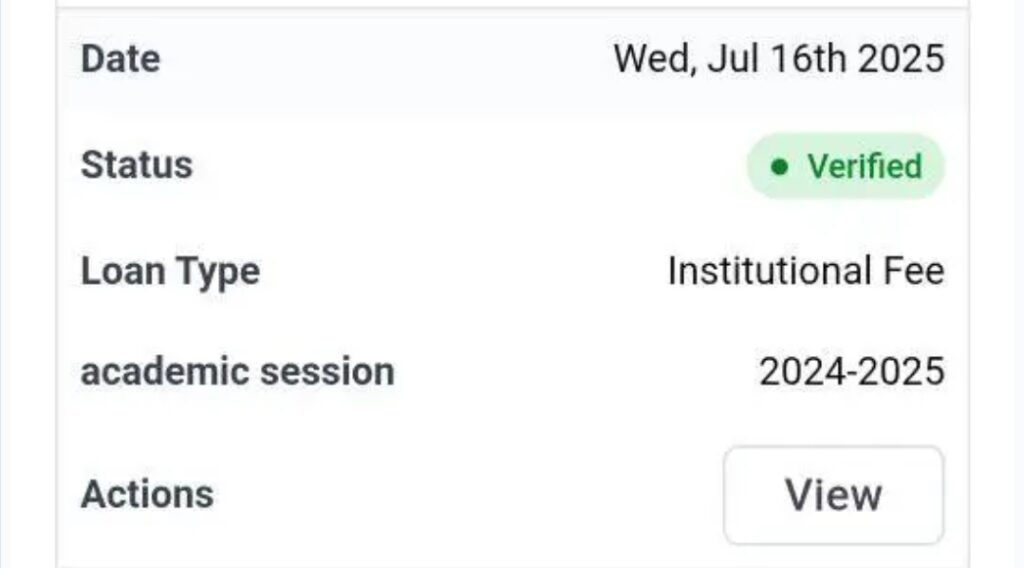
that means your application and documents you provide is verify by nelfund all you have to do is be patient soon your upkeep will be a disbursed
Why was my NELFUND upkeep application rejected in 2025/2026?
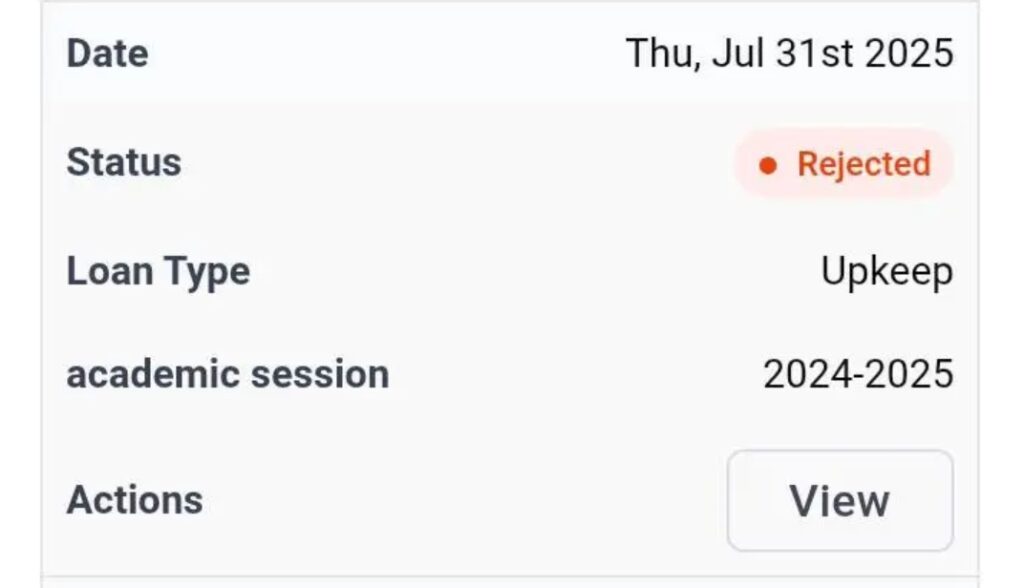
Seeing your NELFUND application status change to “rejected” can be frustrating, but it’s important to remember that it does not always mean you are completely out of options. A rejection usually means that something in your application did not meet the requirements or could not be verified during the review process.
One common reason is invalid bank details. If your account number is entered incorrectly, the wrong bank name is selected, or the name on the account does not match your application details, the system may reject it to prevent payment errors.
Another reason could be unverified documents from your school. NELFUND works closely with institutions to confirm that each applicant is a genuine student. If your school has not verified your admission number, identity, or other academic records, your application might not pass the verification stage.
Sometimes, rejection happens because of unclear or unreadable document uploads. For example, if your admission letter picture is blurry, cut off, or missing important details, the NELFUND team may not be able to confirm your eligibility.
From my experience helping other students, the first step after a rejection is to carefully check your details. Log in to your NELFUND dashboard, review all your uploaded documents, and compare them with what was requested. If possible, visit your school’s ICT or admission office to confirm that your information has been verified on their side.
In some cases, NELFUND may open a correction or reapplication window, giving you a chance to fix the issues. The key is to stay calm, identify the cause, and take action when the opportunity comes.
A rejection can be disappointing, but it’s often just a signal that something needs to be corrected before you can move forward. With accurate details and clear documents, you have a better chance of being approved next time
Conclusion
I hope this guide has answered most of your questions and helped you understand the different issues you might face during your NELFUND application. From eligibility to verification, delays, and rejections, the aim is to make the process clearer so you know what steps to take next.
If there is something you are still unsure about, feel free to leave your question in the comments section, and I will do my best to provide an answer that can guide you. Also, if you found this post helpful, consider sharing it with a friend or fellow student who might need the information.
The more we share accurate and clear details, the easier it becomes for everyone to stay informed and avoid unnecessary stress during the NELFUND application process.


